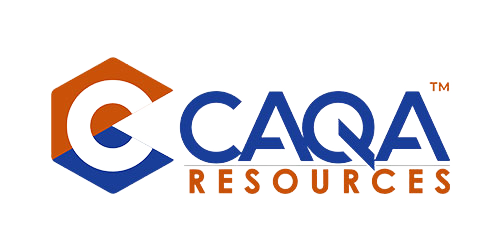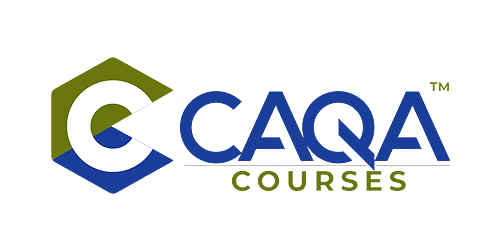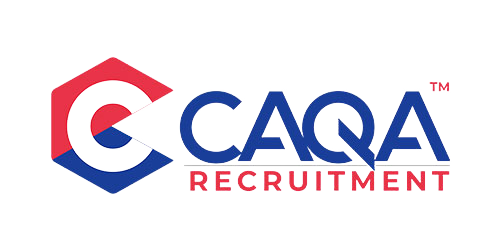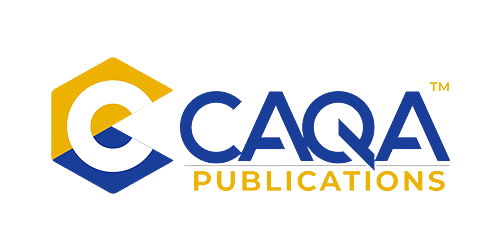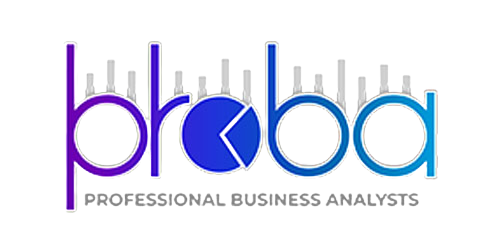Let’s delve into the common mistakes that Registered Training Organisations (RTOs) often make when preparing for audits, shedding light on the reasons these errors occur and how they can negatively affect the audit outcome. From inadequate documentation to insufficient compliance with standards, these missteps can lead to serious consequences, including non-compliance findings or even suspension. By understanding these pitfalls, RTOs can take proactive steps to avoid them and ensure a smoother audit process. This is the first part of a detailed series of articles designed to guide RTOs in preparing effectively for audits and achieving successful outcomes. By identifying pitfalls such as creating evidence to meet compliance requirements, misaligning evidence with claims, and failing to prepare staff adequately, this article offers practical advice on how to avoid these errors. The aim is to help RTOs navigate the audit process smoothly, ensuring compliance and achieving better educational outcomes.
Audits can be a daunting prospect for many Registered Training Organisations (RTOs). While they are a critical component of maintaining regulatory compliance, audits do not have to be feared. With thorough preparation and an understanding of common audit mistakes, RTOs can navigate audits with confidence. Unfortunately, there are several pitfalls that RTOs commonly fall into when preparing for an audit, which can lead to negative outcomes such as compliance issues, wasted time, and unnecessary stress.
An audit is meant to be a structured, systematic process used by the Australian Skills Quality Authority (ASQA) to assess an RTO’s compliance with the Standards for Registered Training Organisations (RTOs) 2015. It is designed to ensure that RTOs are providing high-quality education and training that meets national standards, and it’s not intended to penalise organisations. However, failing to prepare adequately for an audit can hinder the process and lead to a negative impression from the auditors. This article will identify and examine the common mistakes RTOs should avoid to ensure a successful audit outcome.
1. Creating Evidence to Match Compliance Requirements Without Genuine Supporting Documentation
One of the most critical aspects of preparing for an audit is gathering the right evidence. RTOs may feel pressured to provide evidence that meets the auditor’s expectations or the compliance requirements without fully considering the authenticity of the supporting documentation. While it’s essential to provide evidence that meets compliance standards, creating or fabricating evidence that doesn't genuinely reflect the RTO’s practices can lead to significant issues during the audit.
Why This is a Problem:
Creating evidence without genuine supporting documentation can have several negative effects:
- It’s unethical: Providing fabricated or altered evidence violates the principles of integrity and transparency. This can lead to sanctions, penalties, or even the cancellation of the RTO’s registration.
- It’s unsustainable: Fabricating evidence doesn’t address the underlying compliance issues. It only provides a temporary solution, and the problems will surface again during future audits or when real evidence is required.
- It undermines the audit process: The audit is meant to verify that the RTO is following best practices and complying with regulations. If an auditor identifies that evidence has been created or falsified, it can lead to a loss of trust and a tarnished reputation for the RTO.
How to Avoid This Mistake:
- Be honest and transparent: Ensure that all evidence presented during the audit accurately reflects your RTO’s operations and compliance practices. This includes submitting real student records, training materials, and assessment documentation.
- Use authentic evidence: If gaps are identified in your systems or processes, acknowledge them and work towards improving them. Auditors appreciate an RTO’s commitment to improvement rather than relying on false representations.
- Review evidence regularly: Conduct regular internal audits and quality assurance checks to ensure that your evidence is accurate and up-to-date before the actual audit takes place.
2. Evidence Misalignment: Not Ensuring That Evidence Fully Supports the Claims Being Made
Another common mistake is providing evidence that does not fully align with the claims or assertions being made in the RTO’s policies or practices. Evidence misalignment occurs when the provided documentation does not clearly support the standards being claimed, which can result in confusion and misinterpretation during the audit.
Why This is a Problem:
- Compliance gaps: Misalignment between evidence and claims may highlight areas where the RTO is not meeting the standards or is unclear about how the evidence connects to regulatory requirements.
- Inefficiency: If the evidence does not match the claims being made, auditors will spend additional time searching for relevant documentation, which can delay the process and create frustration on both sides.
- Inconsistency: Misaligned evidence can raise doubts about the consistency of an RTO’s practices. If auditors detect discrepancies, they may question the reliability of the information provided.
How to Avoid This Mistake:
- Align evidence with claims: Ensure that each piece of evidence corresponds directly with the relevant standard or requirement. For example, if your training materials claim to meet certain criteria, provide evidence (such as training and assessment strategies) that clearly demonstrates how those criteria are being met.
- Provide sufficient documentation: It’s not enough to just say something complies with a certain standard—show how it does. Include detailed records, such as student files, trainer qualifications, and assessment materials, to clearly support your claims.
- Conduct a thorough review: Before the audit, review all evidence to ensure it is relevant, accurate, and aligns directly with your claims and the regulatory standards.
3. Defensive Behavior: Being Defensive or Combative with Auditors
One of the most damaging responses an RTO can have during an audit is becoming defensive or combative. Audits can feel like an invasion of privacy, but auditors are there to help RTOs improve their practices and ensure compliance, not to criticise or penalise them. A defensive or confrontational attitude can hinder the audit process and create a negative impression.
Why This is a Problem:
- Creates tension: Being defensive can make the audit process uncomfortable and strained, which could make it more difficult for auditors to conduct their work effectively.
- Damages relationships: A confrontational approach can damage the relationship between the RTO and auditors. A good working relationship with the auditor can facilitate the process and make it easier to address any issues identified.
- Obscures potential improvements: If an RTO is overly defensive, it may miss the opportunity to accept constructive feedback and make necessary improvements to its systems and practices.
How to Avoid This Mistake:
- Stay calm and professional: Approach the audit with a positive mindset. Understand that auditors are there to help the organisation maintain compliance and improve practices. Be open to feedback and listen carefully to the auditor’s concerns.
- Clarify misunderstandings: If an auditor makes a statement that you believe is incorrect, address it calmly and provide clear, factual evidence to clarify the situation. Avoid becoming defensive—present the information in a professional, solution-focused manner.
- Focus on collaboration: Remember that the audit is a collaborative process. Work with the auditor to ensure that the organisation is fully compliant and that any identified issues are addressed in a timely and effective manner.
4. Over-sharing or Contradicting Each Other: Sharing Irrelevant Information or Conflicting Statements
Another mistake that RTOs often make during audits is over-sharing or providing conflicting statements. While it’s important to be transparent, sharing too much information—especially irrelevant details—can confuse auditors and make it difficult for them to focus on the key areas of the audit. Contradicting statements from different staff members can further complicate the audit process.
Why This is a Problem:
- Overload of information: Auditors are trained to gather specific information related to compliance, and providing excessive or irrelevant details can overwhelm them and derail the audit process.
- Confusion: If staff members provide conflicting statements or information, it can lead to confusion and may cause the auditor to question the credibility of the information being provided.
- Risk of non-compliance: Providing conflicting statements can create doubt about the consistency of the RTO’s practices, which may lead to findings of non-compliance.
How to Avoid This Mistake:
- Be concise and focused: Only provide the information that is directly relevant to the audit. Avoid volunteering unnecessary details unless specifically requested by the auditor.
- Ensure consistent messaging: Ensure that all staff members involved in the audit process are on the same page. Communicate clearly about policies, procedures, and practices to avoid discrepancies in statements or confusion.
- Provide clear, factual evidence: Stick to the facts and ensure that all evidence provided is consistent with the statements being made.
5. Neglecting Staff Preparation: Not Adequately Preparing Staff or Not Ensuring They Know Their Roles
One of the most common and preventable mistakes is failing to adequately prepare staff for the audit. The role of staff during the audit is crucial, as they will be asked to provide information, answer questions, and present evidence. If staff are not prepared, it can lead to unnecessary delays, confusion, and even compliance issues.
Why This is a Problem:
- Delays: Unprepared staff can slow down the audit process, causing unnecessary delays. If staff don’t know what to expect or how to respond to auditor questions, it can disrupt the audit flow.
- Inaccurate information: If staff are not properly trained on the standards or the processes involved in the audit, they may provide inaccurate or incomplete information, which can lead to non-compliance findings.
- Increased stress: Staff who are unprepared may become nervous or stressed, which can affect their ability to perform their role effectively during the audit.
How to Avoid This Mistake:
- Provide training and information: Ensure all staff members are fully trained on the audit process, their roles, and the relevant standards. Hold briefing sessions or provide written materials to prepare staff in advance.
- Conduct practice runs: Hold mock audits or role-playing exercises to help staff practice answering questions and handling the types of scenarios that may arise during the actual audit.
- Assign clear responsibilities: Ensure each staff member knows their specific responsibilities during the audit. This can help streamline the process and reduce confusion.
A Proactive Approach to Audit Success
While audits can be a challenging and stressful process, they provide a valuable opportunity for RTOs to demonstrate their commitment to quality training and compliance. By avoiding common mistakes such as creating false evidence, misaligning evidence with claims, being defensive, over-sharing, or neglecting staff preparation, RTOs can significantly improve their audit outcomes.
Instead of viewing audits as an adversarial event, RTOs should treat them as an opportunity for improvement. Being prepared, staying calm, and focusing on accurate documentation and transparent communication will help RTOs navigate audits smoothly and successfully. Ultimately, embracing the audit process as a tool for ongoing improvement will enhance the quality of training provided, ensuring that RTOs continue to deliver value to their students and maintain a positive reputation in the industry.









